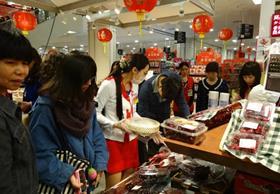
Chile exported 352,783 tonnes of fresh cherries in 2020/21, an increase of 54.3 per cent on the previous season, according to the seasonal summary from Asoex.
Asoex president Ronal Bown said the campaign had been “the most complex that the sector has faced in ten years”, marred by a slump in purchases following unfounded rumours that Covid-19 had been detected in packs of Chilean cherries imported into Shanghai.
China is the main market for Chilean cherries, taking 321,505 tonnes of the total export volume last season.
“Through our Cherry Committee and together with ProChile, we developed a promotional campaign that would allow us to reverse the impact [of the Covid scare],” Bown said.
“This achieved good results in terms of recovering consumption, but prices did not reach the levels seen in previous seasons.”
While figures showing total export earnings for the season were not yet available, the financial impact of the setback in China is likely to be considerably.
Cristián Tagle, president of the Cherry Committee, said the difficulties underscored the need to develop new export markets.
“Nothing can be taken for granted and we know that very well in the fruit industry. This season we were able to see that everything can change in a very short time in China, and for this reason, for some years we have been working together with Minagri and SAG to improve entry conditions and open new markets for our cherries,” he explained.
Over the past five years, the sector has carried out promotions in several other markets, including the UK, Japan, Russia, Indonesia, Taiwan, the US, Brazil, South Korea, India, Thailand.
In October 2020, Vietnam, became the most recent market to open up for Chilean cherries.
“During the 2020/21 season, we implemented promotional campaigns in the US, Brazil, South Korea, India, Vietnam and Thailand, which allowed us to increase exports to these markets by 35 per cent, from 11,700 tonnes to 15,700 tonnes,” Tagle said.
In light of the lessons learned from the challenges of this last season, the committee is now working on the implementation of a medium-term strategy to future proof the industry, which will focus on improving plant protection, diversifying markets, strengthening ties with China and enhancing the unity of the sector.



